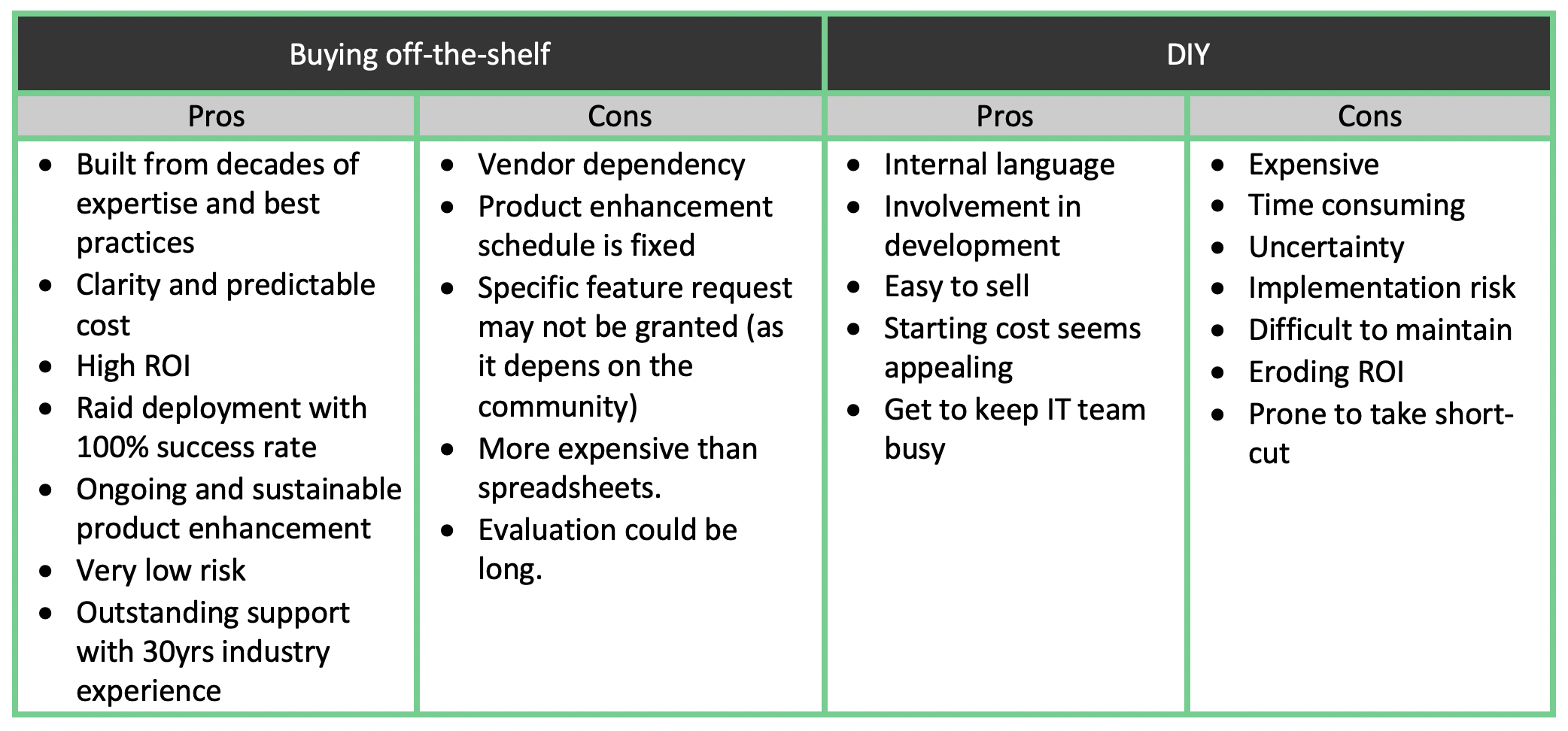What you’ll learn in this article:
- What are the pros and cons of building an in-house remediation system?
- What are the pros and cons of buying one off-the-shelf?
- What you can do to help make the decision easier
Note: Here, “Building” refers to both custom built software from scratch or integrating multiple software to try making things work.
It’s a story you may have heard. Heck, it’s a story you may have lived.
The remediation department reaches out to IT saying “Hey. We need to talk about getting new software. We’re being asked to do more than ever as key members of our team are heading towards retirement. Something’s gotta give.”
IT responds with “I see. Well, Microsoft Office just came out wi-”
Remediation quickly responds with “No, it needs to be more than that. We’ve tried spreadsheets - they aren’t enough to handle complex project management."
So Remediation suggests they evaluate ENFOS, the only single-purpose software built specifically for the management of remediation portfolios.
IT hesitates. “Hm... I don’t know. Buying these things can be expensive.” Then they say it:
“Why don’t we just make one of our own?”
Over the last few decades, this scene has been genuinely common. We’ve seen the story of DIY systems for remediation play out the same way every single time: Unequivocal failure.
Sounds harsh? The truth is that the decision to build in-house, ad-hoc systems has burdened many a remediation team. We’ve seen it first-hand. But is building your own management system for remediation really so bad? Let’s look at the pros and cons.
Pros of the DIY remediation management system
- System is built from the ground-up using familiar, internal language.
- You can involve your team in the design and testing phase of software development.
- It sounds good on paper and is easy to sell internally.
- The initial cost estimate might look appealing.
- You get to keep your IT department busy.
Cons of the DIY remediation management system
- Extremely expensive and time consuming. Requires full product development: needs analysis, requirements gathering, blueprinting, engineering specifications, development, testing and implementation planning all add up to a whopping cost of both money and time.
- Uncertainty. Actual cost can be difficult to estimate at the start of the project.
- Difficult to create given the challenges of remediation specific requirements and use cases.
- High implementation risk of unproven technology.
- Currency. As soon as the system is built, it may have already become stale or obsolete.
- Difficult to maintain and update through time.
- Potential for taking seemingly-unimportant shortcuts in design or development in order to keep costs down - these can cause trouble later on
- Long-term eroding ROI as the capabilities of the system are unable to keep up with evolving industry best practices.
Although the apparent lopsidedness may imply a bias on our part - it is actually that lopsided in reality. When you consider all of the moving parts of a remediation portfolio, building a software solution that handles every aspect excellently is an impossibly tall order for any IT team.
Now, let’s take a look at the pros and cons of buying a remediation management solution off-the-shelf.
Pros of the commercial remediation management system
- The result of decades of expertise and effort distilled into a singular purpose: making the best possible remediation management system.
- Knowing the cost upfront for both software and the implementation.
- High ROI due to rapid deployment and proven customer value
- On-going product enhancements driven by user needs, best practices and new tech
- SaaS technology reduces the burden on IT and provides data security best practices.
- Implementation risk is exceptionally low, based on past proven successful implementations in all types of organizations.
- Support from domain experts with 30+ years in the remediation management industry
- Real-time access to a single version of your data and your documents in one purpose-built system.
Cons of the commercial remediation management system
- Having to rely on a software vendor to deliver on the product and services from their offer.
- Product enhancements are planned and published by the software company on a periodic schedule.
- Updates can’t be specifically requested, most are based on feedback from the user community
- More expensive than spreadsheets, needs a certain size of portfolio to justify cost
- Organizations don’t always have a policy or a set of standards for evaluating and deploying SaaS (software-as-a-service) applications.
To sum it up:

Buying enterprise software for your business can be a daunting task. Building a business case, getting the right buy-in, evaluating the options and consulting different departments for data security and integration concerns - it can all seem like a lot.
But it can be more than worth it. Especially when the alternative is taking on the insurmountable challenge of building your own system.

ENFOS is an all-in-one enterprise cloud software built SPECIFICALLY for handling the many moving pieces of a remediation portfolio.
We invite you to hear what ENFOS can offer your remediation department from our customers themselves.
Reach out and get a quote now.
Too soon? Learn how much you can save using our free online cost savings calculator.





